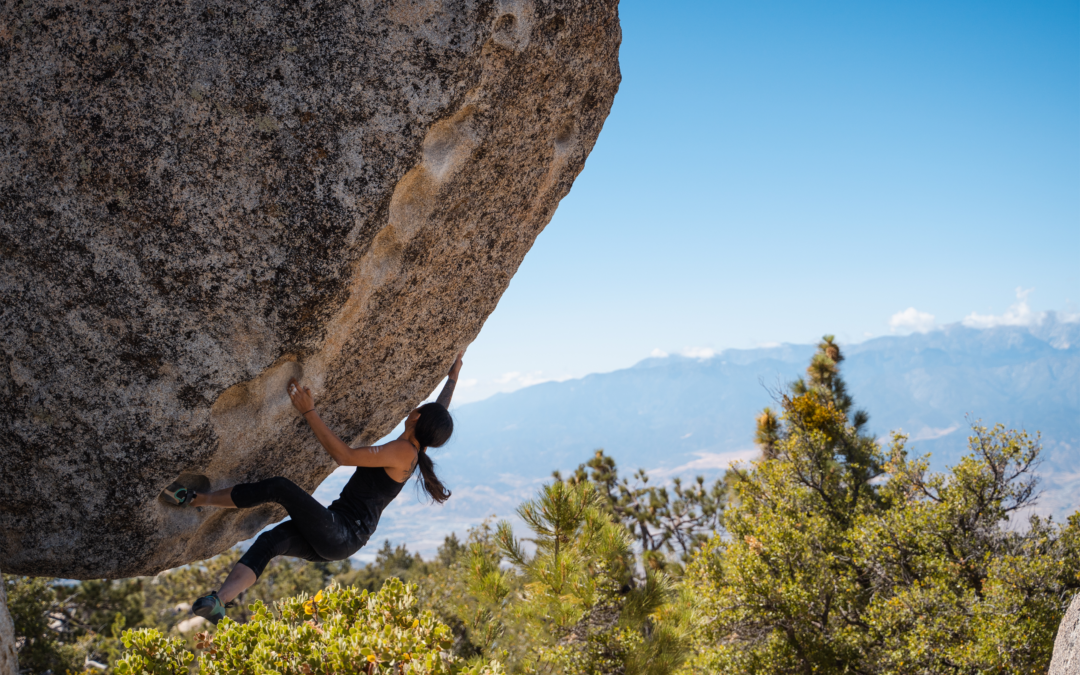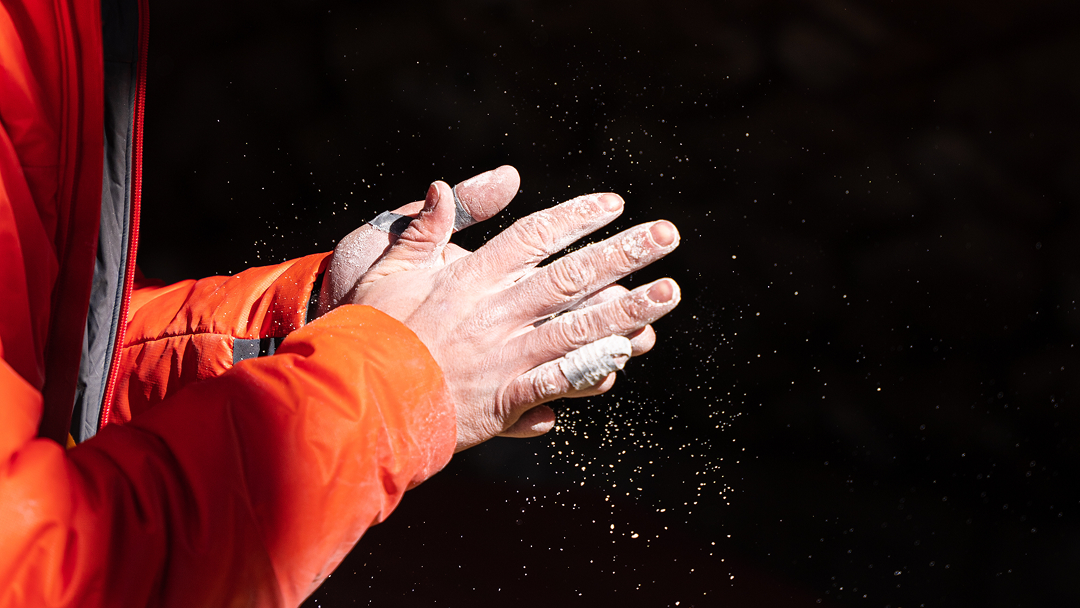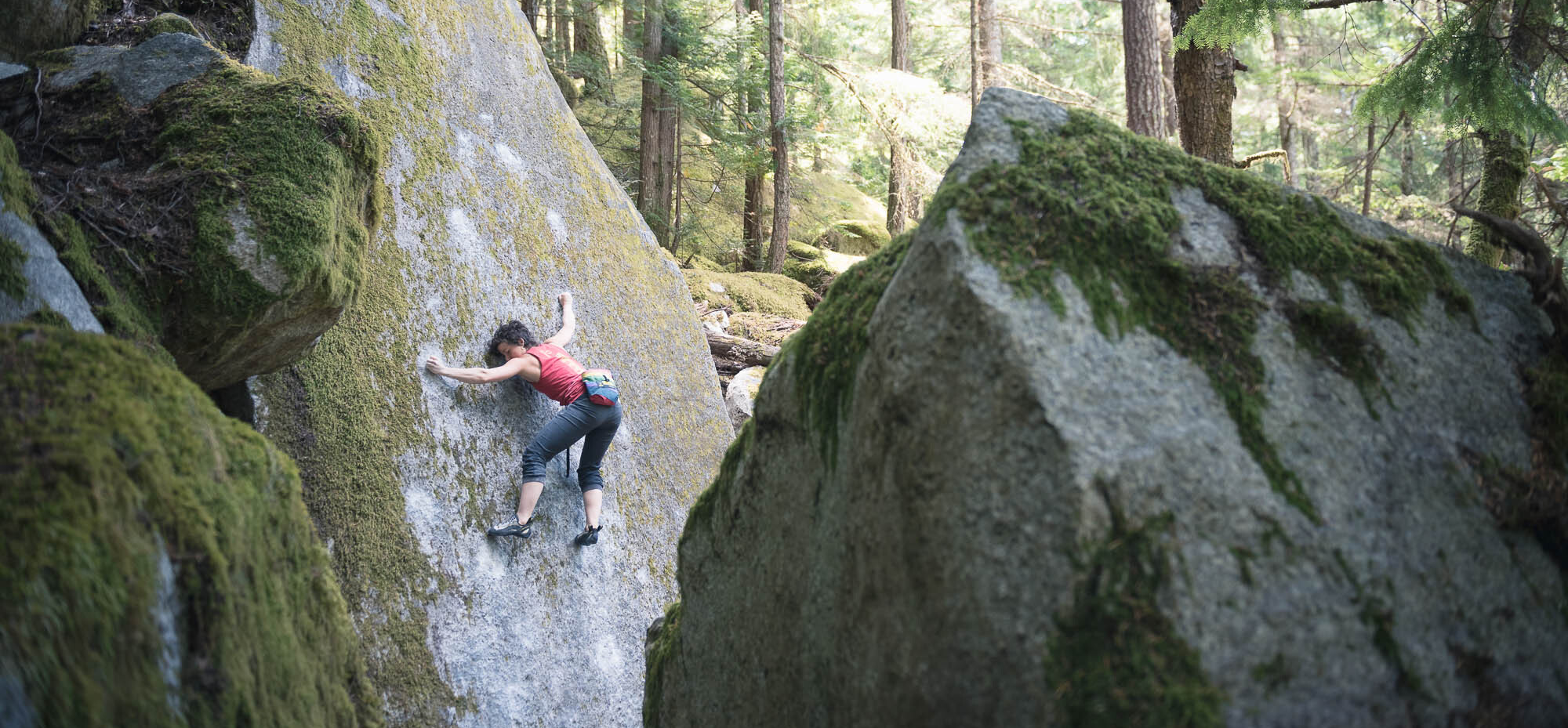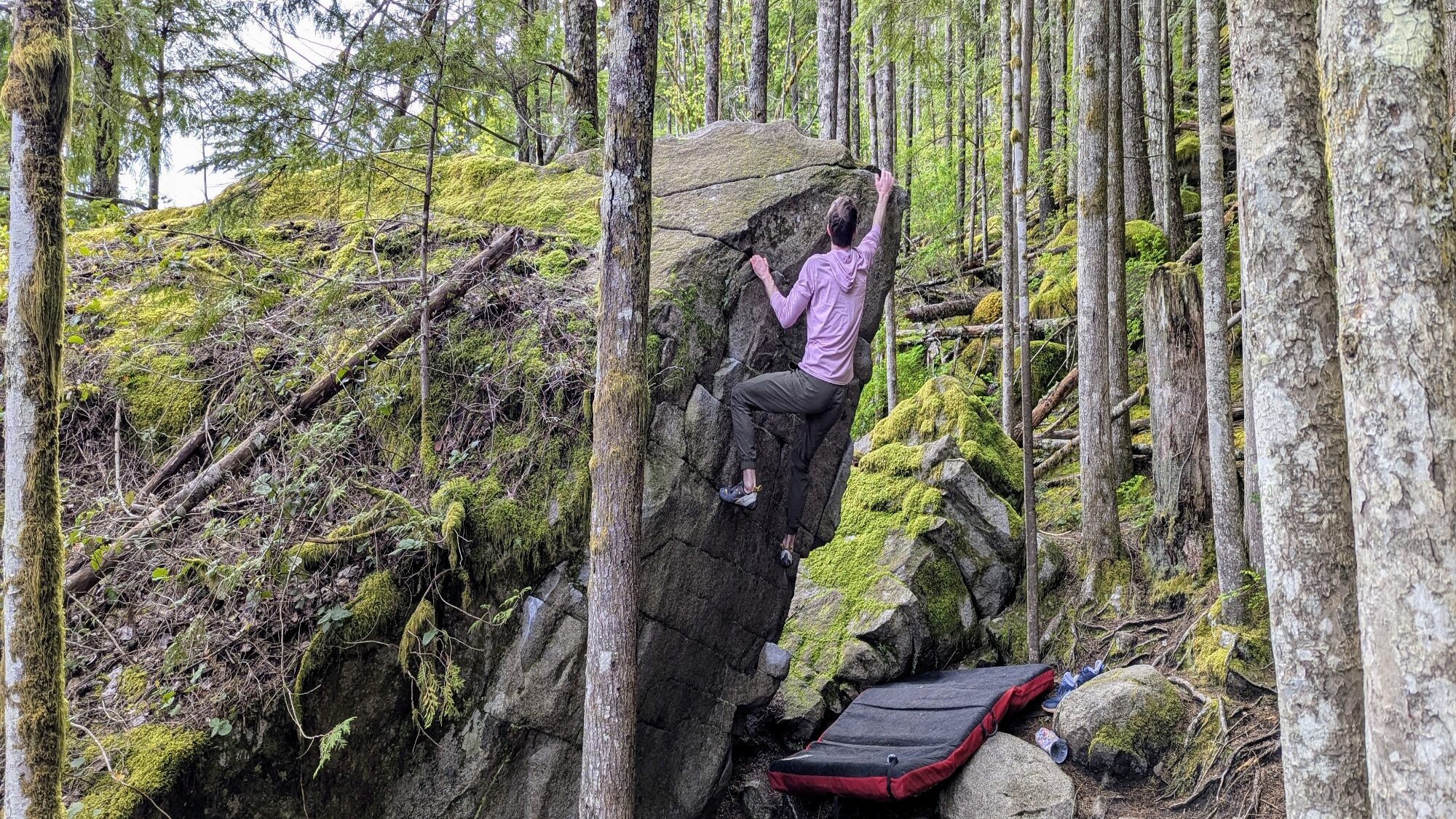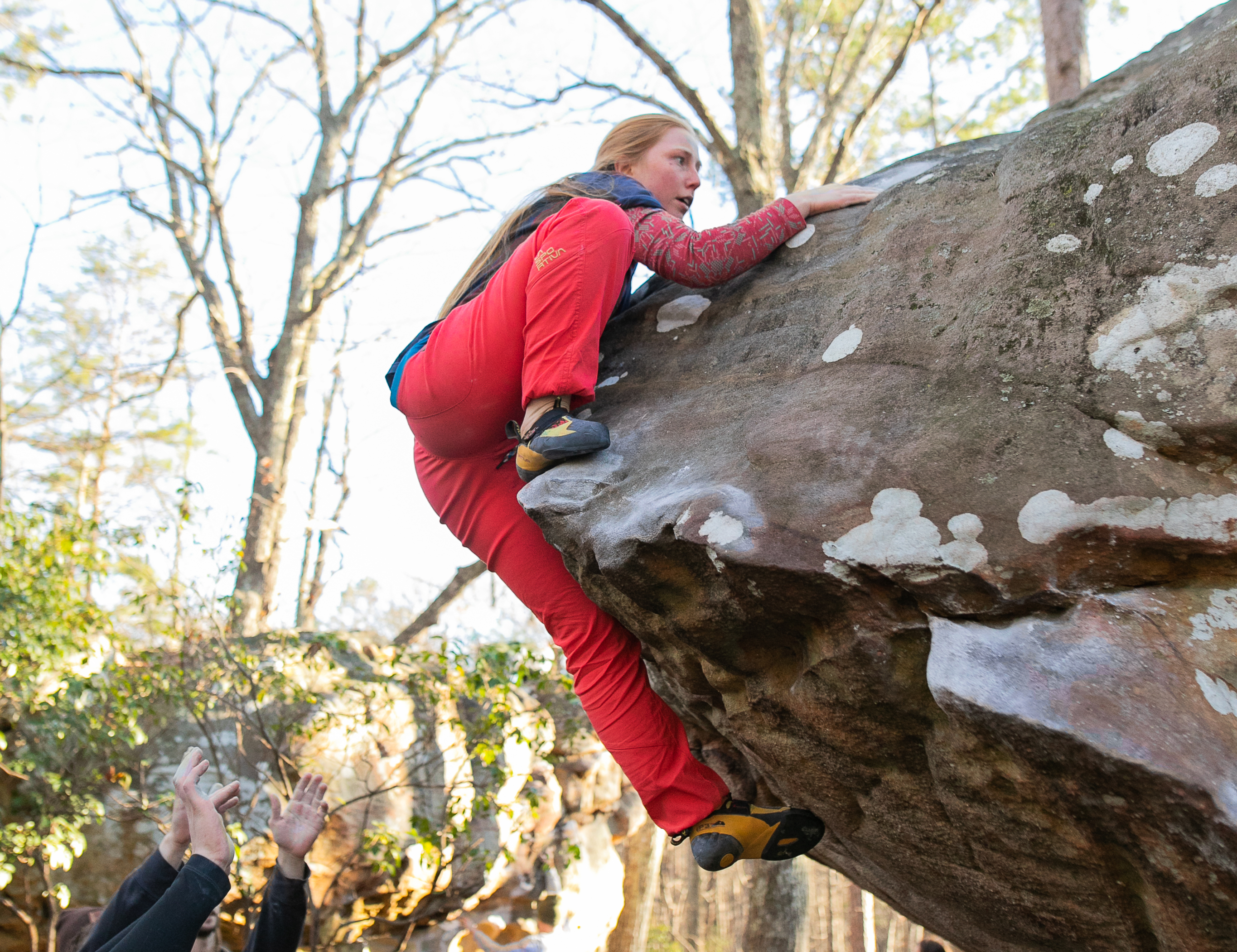Black Mountain, California Bouldering Overview
Located in the San Bernardino National Forest within the San Jacinto Mountains, Black Mountain is one of the most iconic bouldering destinations in Southern California. Known for its high-quality granite, cooler summer temps, and climbing legacy, this area has attracted generations of crushers with ascents dating back to the Stonemaster era, early gym climbers, and legends like Chris Sharma during his Rampage days.
Whether you’re coming for a weekend or a season, here’s everything you need to know to make the most of your trip.
Understanding Black Mountain Bouldering
History of Black Mountain Bouldering
Black Mountain has been quietly shaping Southern California’s climbing scene since the 1970s. Initially explored by the legendary Stonemasters, it served as a training ground for many of the climbers who would go on to define Yosemite free climbing and the early bouldering movement.
Over the decades, locals from nearby Southern California climbing hubs—especially Riverside, San Diego, and LA—continued to develop problems throughout the area. In the 1990s and early 2000s, Black Mountain experienced a boom in development. Chris Sharma bouldered here in his Rampage days, and many of the area’s boldest lines still fly under the radar, offering a sense of adventure and solitude that’s rare in more crowded bouldering zones.
Due to the spread-out nature of the zones and the lack of comprehensive documentation over the years, many problems never had official names or established grades. The result is a living, breathing bouldering area where modern climbers are still uncovering climbs in real time.
Rock Type and Climbing Style
Black is known for its high-quality granite, which is grippy and sharp. The texture allows for excellent friction and makes for satisfying, but skin-testing sessions. Expect everything from thin edges to burly slopers and typical granite features like seams and cracks.
Because of the elevation (around 7,000 feet), conditions are often excellent in spring and fall, cool, dry, and breezy. But with that altitude also comes quicker skin wear and more physical exertion on hikes and warmups. Come prepared to work for it.
Best Times to Boulder in Black Mountain
Black Mountain is best climbed in the spring and fall, when conditions are ideal and the access road is open. The high elevation keeps conditions prime even when other SoCal areas are too hot.
- Spring: Crisp mornings, mild afternoons, and prime friction. Road conditions vary depending on snowfall. Early spring may require hiking in, so be prepared for up to a 1.5-hour hike.
- Fall: Stable weather, less snow risk, and fewer bugs. The best season for longer trips and projecting.
- Summer: Possible, but hot. Early mornings and shady zones can still offer decent sessions, especially compared to other SoCal zones in the summer. The elevation helps, but sun exposure can be miserable.
- Winter: Often snowed in. The dirt road (4S01) is closed, but some climbers still hike in for solitude and good conditions if the snow is light.
Don’t forget to check the San Bernardino National Forest road conditions before your trip, and bring plenty of water, especially during the hotter months.
Essential Areas for Every Skill Level
Beginner-friendly Classics
Don’t let Black Mountain’s reputation for hard climbs fool you! Black has plenty to offer new climbers, too. Beginners will find plenty of gems scattered throughout the forest, and the easy access and solid landings in many areas make it a great place to build confidence while enjoying the high-elevation breeze and sweeping views.
Whether you’re just getting into bouldering or looking for a mellow day out, these approachable problems are a perfect way to explore what Black has to offer.
Gym Problem V2 — is a perfect place to start your transition from plastic climbing to real-rock. Juggy holds on slab.
Flower Pot Dyno V1 — A fun jump to a huge jug. Taller climbers will just span, while shorter climbers will have to to jump.
Pink Crack V3 — Start on a juggy vertical crack and climb past horizontal cracks to a big reach for the lip. A good intro to crack features at Black, with solid holds and a straightforward top-out.
If you want to get some air under your feet, check out the classic, and often photographed Once Upon A Time V3. This is not a boulder to fall on.
No matter what area you choose, rest assured that there will be plenty of beginner-friendly problems to test yourself on. Climbing a large volume of climbs in this grade range is the fastest and best way to quickly improve your technique on this rock type!
Intermediate Classics
Black Mountain is ideal for climbers pushing into the V3–V6 range. The rock rewards precise footwork, tension, and commitment. You’ll find everything from steep compression lines and delicate slabs to tall, memorable features with incredible movement.
Whether you’re looking to project your first V5 or link up a circuit of moderates, these climbs showcase the best of what Black has to offer at the intermediate level.
Gypsy’s Day Out V4— Start low on a right-facing jug in the crack, then follow the crack through powerful moves up the face. A must-do for intermediate climbers looking for classic, sustained movement on featured stone.
Ok Problem V4— Start on a left-hand patina jug on the right arete and trend left to more patina crimps and jugs.
NRA V6— Start on the obvious jugs and take your pick between a juggy knee-bar or a funky foot-first sequence.
Tour De France V7— Start high, squeezing the diagonal seams and making a precise move to a juggy slot. Finish with good crimps to a deceivingly difficult slopey topout.
El Brute V7— Start seated with a left-hand arete and small right-hand sidepull. Squeeze up to a wide pinch and good—but hollow—holds up the face.
Hard Classics
Black Mountain has long been a proving ground for climbers chasing grades, and the harder problems here deliver on both difficulty and aesthetics. Expect quality boulders that have tested some of the best. These are the lines that define Black at the higher levels.
The 8th Dimension V8— Start on the arete and horizontal rail, then power through steep moves to a juggy lip. A proud, overhang with a tricky finish—this one will test both your tension and your mantle skills.
Buzz Saw V10— Start overhead with a left-hand crimp and right-hand sidepull, then work through a few tensiony moves before gaining a jug and easier ground above.
I Animal V9— A jumpy, tension-heavy line that’ll feel right at home for comp climbers and dyno lovers alike.
Der Kapitan V11— Steep, burly, and bold! Start on a large jug in the steep overhang and move left through incut crimps to a big throw at the lip.
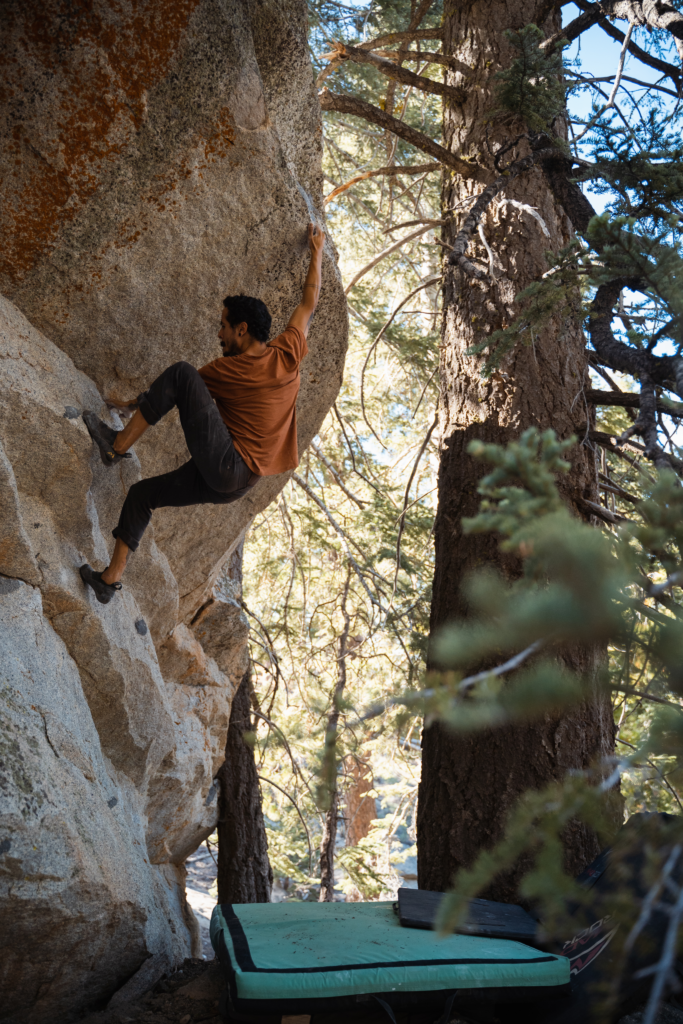
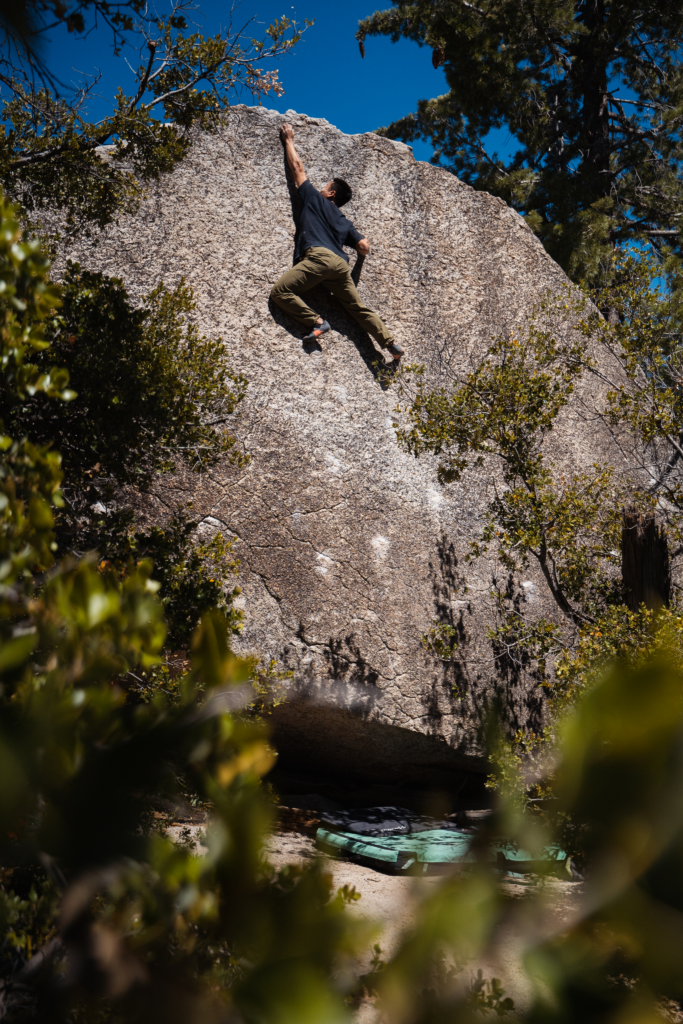

Planning Your First Black Mountain Bouldering Trip
With hundreds of granite boulders scattered across pine forests, talus slopes, and mountain ridges, planning ahead is key to making the most of your first trip to Black Mountain. This area offers some of the best bouldering in Southern California—if you know where to go and how to get there.
Approach times vary widely. Some zones are near the campground or dirt road, while others require a hike through steep, forested terrain. Cell service is limited, so it’s best to download maps and problem lists before heading up.
Required Gear
Coming prepared will help combat the higher altitude and sharp rock. Bring:
- Layers, mornings can be chilly, even in warmer months
- Climbing shoes with fresh, stiff rubber
- Multiple crash pads, landings can be uneven, rocky, or sloped
- Tape and a brush for cracks and cleaning holds and tick marks
- Grippy approach shoes for navigating dirt roads and approaches
- Plenty of water, especially in summer
Skin Preparation
Granite rock is textured and abrasive on the fingertips. If you’re used to indoor holds or slicker rock like limestone or quartzite, prepare for your skin to wear down quickly. After a few painful sessions at Black, your skin will adapt to the granite, but tactics will go a long way to make sure you get the most out of your trip. Save sharp or south-facing problems for cooler mornings or shady days, and remember that sandpaper, salve, and tape are your friends.
Navigation tips
Forest Route 4S01 is the main dirt road leading to Black Mountain. It’s usually open from late spring to early fall, but closures due to snow or poor conditions are common in winter and spring. The road is only occasionally maintained, so 4WD/AWD is strongly recommended, though usually most cars can get to all the main areas.
- Download Kody Shutt’s complete guide on KAYA in advance. Cell reception is limited.
- Some zones are a short walk from Boulder Basin Campground or OK Corral, while others require up to an hour of hiking
Closest Towns: Idyllwild and Pine Cove
Closest Airports: Palm Springs (1.5 hours), San Diego (2.5 hours), LAX (2.5–3 hours)
Safety and Ethics Essentials
Keep yourself safe and protect access and the environment by following these key practices:
- Spot responsibly; many problems are highballs or have tricky landings
- Use multiple pads and proper pad coverage, especially on talus or sloped zones
- Brush holds and tick marks before leaving
- Stay on established trails to minimize erosion
- Respect seasonal fire restrictions. Even if a fire ring is present, it may not be legal to use
- Dogs are allowed but must be leashed and under control at all times. Clean up after them.
Black Mountain Bouldering Conclusion
Black Mountain is one of the most rewarding granite bouldering destinations in Southern California. With its quiet forest setting, proud lines, and deep climbing history, it offers something for everyone—from beginner-friendly slabs to tall testpieces.
Bring the right gear, plan your trip, and respect the area—and you’ll be rewarded with quality climbing on some of SoCal’s finest rock.
For recent updates, maps, and beta, download Kody Shutt’s guide on KAYA before heading out.


